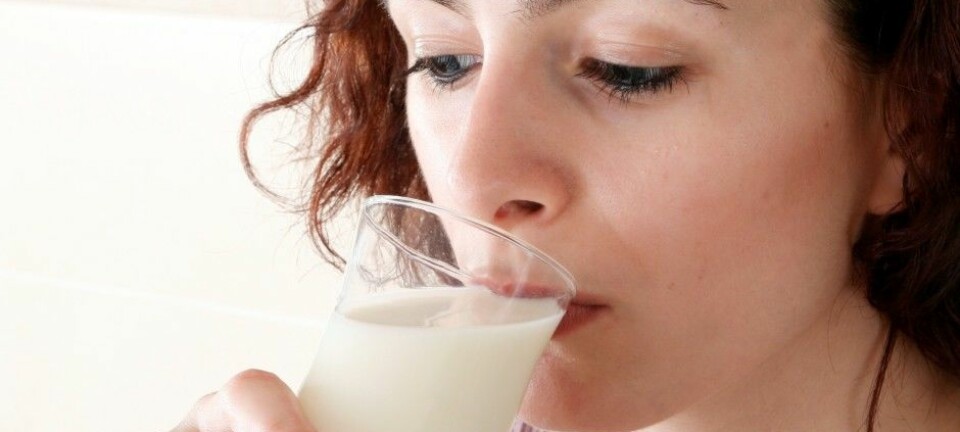
Milk and your health: The jury is still out
Largest study of its kind gives no conclusive answer to the question of whether milk increases the risk of cancer, heart disease, or premature death.
Can milk increase your risk of developing cancer, cardiovascular disease, or even suffering a premature death? Scientists still cannot say for sure.
In the largest meta-study of its kind, which reviewed all previously published studies looking for a link between milk and increased health risks, scientists were unable to draw any meaningful conclusions.
A lack of consistent study design of the previous studies along with vastly different levels of milk consumption are to blame.
“It’s like comparing apples with oranges,” says co-author Professor Karl Michaëlsson, from Uppsala University Sweden.
“In a study like this we normally get a pooled estimate on the total risk of death or diseases, but here it didn’t work because the available studies are just so different from one another.”
“In high [milk] consumption countries there’s still a concern about the risk of cardiovascular disease, cancer, and [premature] death and here the medical advice hasn’t changed--but we need bigger studies before we can judge the overall risk from milk and milk products,” he says.
The new research is published in the journal Nutrients.
No standard research methods
Milk, cheese, and yogurt are an generally accepted part of a healthy diet, offering a good source of calcium and protein. But when it comes to the risk associated with specific diseases and various levels of milk consumption, the picture quickly becomes messy.
Some studies report reduced instances of colorectal cancer, while others report an increased risk of prostate cancer. There is patchy and inconsistent evidence for an increased risk of cardiovascular disease and type-2 diabetes, and recently the evidence of milk’s ability to stave off hip fractures has also been called into question.
So why all the confusion?
One problem, says Michaëlsson, is that milk consumption is so wildly different from one country to another and this makes it difficult to compare findings. Take for example Japan, where the average consumption is about half a decilitre of milk a day, and compare it to Sweden where it is about two glasses a day.
“With such different exposure ranges it’s impossible to compare the two,” he says.
Another complication is a lack of consistency between each of the study designs.
“In some studies they classify milk exposure in five levels, and in others they use nine. In some surveys, they ask just a few questions while others ask a hundred different questions,” says Michaëlsson.
Larger and more consistent studies are needed
Dagfinn Aune, a PhD student, currently based at the School of Public Health, Imperial College London, agrees with Michaëlsson’s conclusions.
“The problem with the study as I see it was that the association between milk consumption and mortality and cardiovascular disease was different from study to study,” he writes in an email to ScienceNordic. Aune was not involved in the new research, but has also published studies on the health impacts associated with milk products.
Assistant Professor of epidemiology Marcia C. de Oliveira Otto, from The University of Texas Health Science Center at Houston, School of Public Health, agrees.
She questions whether self-reporting methods to measure milk consumption, as used in many of the studies reviewed by Michaëlsson and colleagues, is a good idea as it is well-known that they contain errors or information bias.
Other important factors related to dairy consumption and mortality such as hypertension, physical activity, BMI, and pre-existing diabetes or cardiovascular disease were also omitted in many of the studies included in the review, notes Otto.
“It does indicate the need for better consistency across studies evaluating these associations, including careful consideration of relevant factors [and] better measures of milk consumption, in order to allow meaningful conclusions based on a larger body of evidence,” she writes in an email to ScienceNordic.
What is a safe level of milk consumption?
According to Aunne, right now there simply isn’t enough evidence to issue general advice on the safe levels of milk.
“I think it will be difficult to make any recommendations regarding milk intake when results are so scattered in different directions. Usually the studies have to have more or less similar results in the various studies to be able to make recommendations for dietary intake,” he writes.
This is echoed by Otto.
“What we know from scientific evidence so far is that there is no evidence of harmful effects of milk consumption on cardiovascular disease risk. There are some studies suggesting benefits from dairy consumption to metabolic health,” she writes.
Michaëlsson, however, presents an even bleaker view. He emphasises that relatively high milk consumption--up to two glasses a day--has been associated with increased risk of premature death both in a female and a male cohort study in Sweden.
“In our Swedish study we do see a strong association [between high milk consumption and cardiovascular disease, cancer, and mortality], but we need additional comprehensive and standardised studies before we can issue further advice,” he says.
Scientific links
External links
- Karl Michaëlsson
- Dagfinn Aune (PhD student at NTNU, Norway, but currently based at Imperial College, London)
- Marcia de Oliveira Otto:










